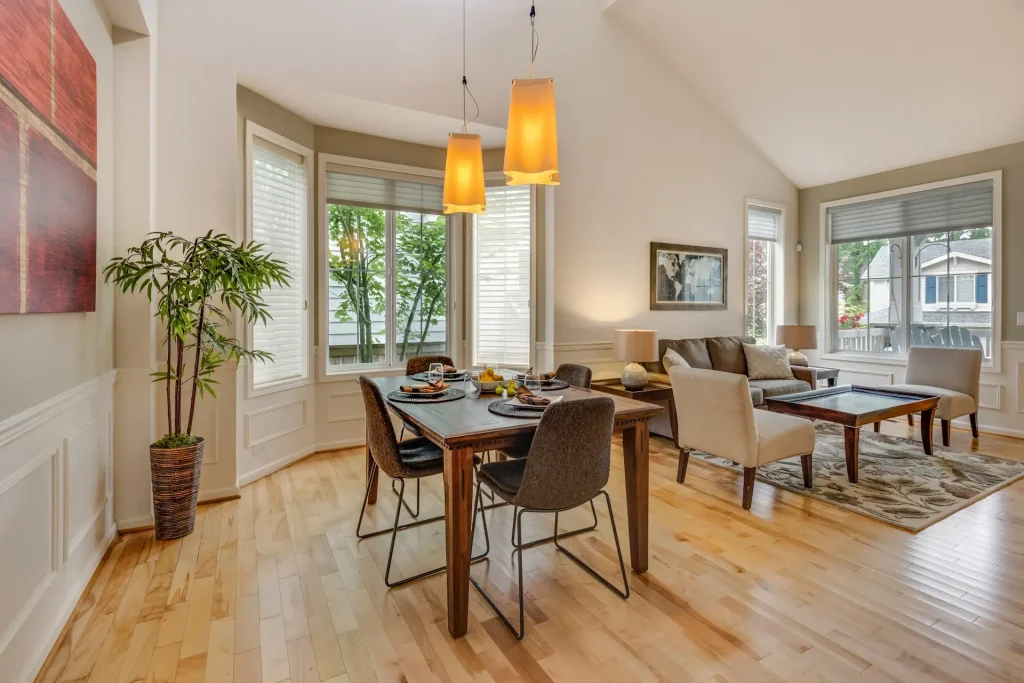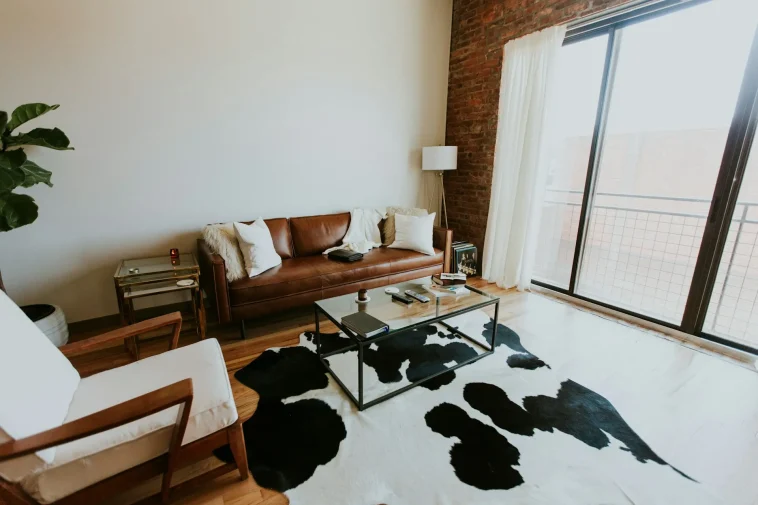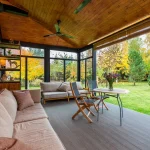The home design industry is increasingly focusing on creating healthier living spaces due to a growing awareness of how our surroundings affect our well-being. Biophilic design, which incorporates natural elements to connect indoor and outdoor spaces, has become a popular trend. This approach is especially relevant in Houston, where residents seek relief from urban life and harsh weather. Using biophilic design principles can turn homes into sanctuaries that promote health, reduce stress, and improve overall quality of life.
This article looks at how biophilic design can be applied to homes in Houston. We’ll explore its main ideas and discuss practical ways to add natural light, outdoor views, and plants to indoor spaces. We’ll also look at the benefits of water features and natural materials, as well as the importance of creating multi-sensory experiences. A Houston interior designer can offer expert insights and tips on seamlessly integrating these elements into your home.
The Basics of Biophilic Design
Biophilic design is about connecting indoor spaces with nature to create a more relaxing and balanced environment. Key ideas include using natural light to brighten rooms, adding plenty of greenery, and ensuring homes have good views of the outdoors.
By doing this, homeowners in Houston can turn their houses into peaceful retreats, lowering stress and boosting overall well-being. This design style not only improves physical health with better air quality and natural light but also enhances emotional wellness by creating calming, nature-inspired environments that reflect the beauty of the surrounding terrain. Additionally, incorporating water features and natural materials like wood and stone can further enrich the home’s aesthetic and sensory appeal.
Natural Lighting and Views
Incorporating natural light and outdoor views is important in biophilic design, greatly improving a home’s atmosphere and well-being. Natural lighting brightens indoor spaces and offers health benefits like better sleep and improved mood. To increase daylight, homeowners can strategically place windows, add skylights, and use light-reflective surfaces.
Including outdoor views is just as important. Large windows facing gardens, patios, or natural scenery create a visual connection to nature, promoting relaxation and reducing stress. Simple changes, like trimming trees that block sunlight or orienting living spaces towards the best views, can make a big difference.
Indoor Greenery and Plant Life
Adding indoor plants to your home has many benefits beyond just decoration. Including a variety of plants, from colorful flowers to leafy greens, can improve air quality and create a calming atmosphere. Plants like spider plants, peace lilies, and snake plants are especially good at filtering toxins and producing oxygen.
What’s more, having plants around can reduce stress, boost mood, and increase productivity. For those in Houston, where heat and urban stress are common, indoor plants can be a key part of a nature-inspired home design. Whether using potted plants, vertical gardens, or hanging planters, adding greenery can turn your home into a peaceful haven.

Water Elements and Natural Materials
Adding water elements and natural materials like wood and stone to your home can create a peaceful and natural atmosphere. Features like indoor fountains, small ponds, or even aquariums bring the soothing sound of flowing water indoors, reducing stress and promoting relaxation. Natural materials, such as wooden furniture, stone countertops, and wood flooring, add warmth and texture, creating a grounded and calming environment.
These elements not only look beautiful but also connect you with nature, making your home feel more peaceful and restorative. Imagine a living room with a stone fireplace, wooden beams on the ceiling, and a serene indoor waterfall. By incorporating water features and natural materials, you can create an inviting and harmonious space that enhances your well-being and balance in everyday life.
Creating Multi-Sensory Experiences
To create a complete biophilic experience, it’s important to engage multiple senses with textures, natural sounds, and aromas. Imagine the softness of a wool rug under your feet, the gentle sound of a small indoor waterfall, and the subtle scent of lavender in the air. These elements combine to make a space that not only looks nice but also feels comforting and refreshing.
Using different textures, like woven fabrics and natural materials, invites touch. Adding sounds like rustling leaves or bird songs can drown out city noise, helping you relax. Natural fragrances from essential oils or fresh herbs can make you feel more connected to nature, enhancing the overall atmosphere. By thoughtfully including these sensory details, homeowners can turn their spaces into true sanctuaries that engage all the senses, deepen their connection to nature, and promote overall well-being.
Embracing biophilic design principles in Houston homes can enhance the living environment by fostering a stronger connection to nature. By incorporating natural lighting, outdoor views, indoor greenery, and elements like water features and natural materials, homeowners can create spaces that promote health and well-being. This approach not only improves physical health with better air quality and natural light but also enhances emotional wellness through calming, nature-inspired environments. Ultimately, biophilic design transforms homes into peaceful sanctuaries, providing a refuge from urban stress and creating a balanced, restorative living space.




